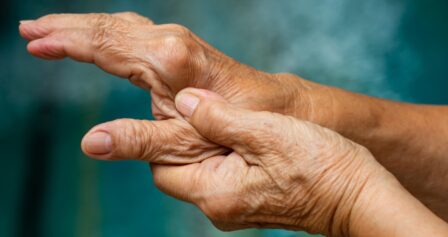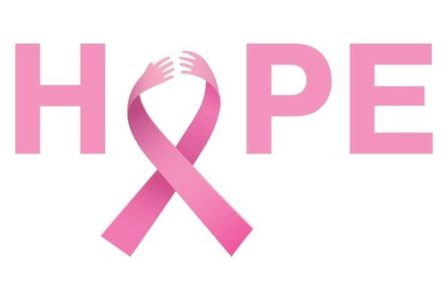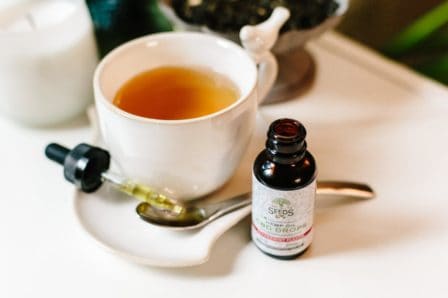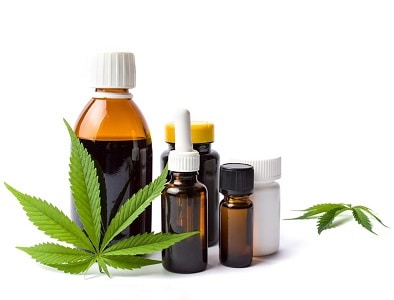Cannabis for Chronic Pain Relief - Exploring the Possibilities
Roughly 50 million Americans are living with chronic pain. Many of them suffer in silence, without access to one of the most talked-about alternatives out there: cannabis. Over-the-counter painkillers often don't cut it. Prescription drugs? They can come with serious side effects, including dependence and addiction. Amid an ongoing opioid crisis, people are desperate for safer, more effective options. That's where cannabis for chronic pain relief comes in.
Researchers, doctors, and patients are all taking a closer look. And for good reason. Medical marijuana is now legal in 31 states, and demand is growing. CBD doctors are constantly fielding questions like, "Which strain works best for chronic pain?" or "Is cannabis safer than opioids?"
Let's break it down.
Does Marijuana Really Help?
You might've heard the claim: "There's not enough research to prove marijuana works for pain." That's not true.
A growing number of scientific studies show that cannabis can effectively relieve neuropathic pain and muscle spasms. And that's just the beginning. There's also evidence it helps people with other debilitating conditions such as cancer, Parkinson's disease, fibromyalgia, migraines, and more. Some researchers are even exploring whether cannabis aids muscle recovery and growth.
So why the confusion?
Blame outdated federal laws. Because the DEA still classifies cannabis as a Schedule I drug at the federal level, researchers face major roadblocks. They need a special license from the DEA to grow or study marijuana. And even then, the weed they get from federal sources is often much weaker than that sold by the dispensaries.
Angela Brown, a professor at the University of Colorado, put it plainly: "If we do anything in violation of federal law, we could have all federal funding withdrawn."
So yes, the science is there, but politics still stand in the way.

What’s the Best Cannabis for Pain Relief?
Here's the truth: There's no one-size-fits-all answer.
Different strains work differently for various people. Your ideal strain might do nothing for your neighbor. That's because cannabis isn't a single chemical—it's a complex mix of compounds. The two most common species used in medical marijuana are Cannabis sativa and Cannabis indica, but there are hybrids, too.
The show's real stars are cannabinoids—compounds like THC and CBD that interact with your body's pain pathways. Researchers have already identified over 60 cannabinoids, and they likely work in tandem with terpenes and flavonoids to boost pain-relieving effects.
So, if you're exploring cannabis for chronic pain, expect to do a little experimenting. Start slow. Track your response. And don't be afraid to ask questions. Relief might be closer than you think.
Cannabis Strains and Products Effective for Different Types of Pain
Neuropathic Pain (e.g., nerve damage, MS)
Effective Cannabinoids: High THC and moderate CBD
Recommended Strains:
- ACDC: High in CBD, low in THC – suitable for those seeking relief without intoxication.
- Harlequin: Balanced THC/CBD ratio – reduces pain with mild euphoria.
- Jack Herer: Uplifting Sativa-dominant hybrid with reported nerve pain relief.

Inflammatory Pain (e.g., arthritis, IBD)
Effective Cannabinoids: High CBD, anti-inflammatory terpenes (like myrcene and beta-caryophyllene)
Recommended Strains:
- Cannatonic: High CBD, used for arthritis and inflammation.
- Charlotte's Web: Very high CBD, often used in tinctures or oils.
- Pennywise: Indica-dominant, 1:1 THC/CBD ratio, calming and anti-inflammatory.
Muscular Pain and Spasms (e.g., fibromyalgia, back pain)
Effective Cannabinoids: Balanced THC/CBD; muscle-relaxant terpenes (like linalool)
Recommended Strains:
- Blue Dream: Hybrid, good for pain without heavy sedation.
- Northern Lights: Strong Indica, ideal for night-time relief and muscle relaxation.
- Bubba Kush: Indica, commonly used for chronic body pain and insomnia.

Cancer-Related or Severe Chronic Pain
Effective Cannabinoids: High THC for strong analgesic effect, potentially with CBD to reduce psychoactivity.
Recommended Strains:
- OG Kush: Potent, widely used for severe pain and appetite stimulation.
- Granddaddy Purple: Heavy indica, sedative, and pain-relieving.
- Girl Scout Cookies (GSC): High THC, popular for chronic pain and mood support.
Product Types (Beyond Strains)
- Tinctures/Oils: Precise dosing, often used sublingually; suitable for chronic conditions.
- Topicals: Creams or balms with CBD/THC for localized pain (e.g., arthritis).
- Edibles: Long-lasting relief but slower onset.
- Vaporized Flower or Oil: Fast relief, beneficial for breakthrough pain.
Currently, some states have approved the oil, tincture, and edible forms of cannabis for use as medical cannabis. Studies have also proved that the route of administration also determines the best marijuana for chronic pain. The oral forms may take longer, and their effects usually last longer.

General Dosing Guidelines for Using Marijuana
Key Principles for Dosing
- Start Low, Go Slow: Begin with a low dose, especially if you're new to cannabis or using THC.
- Balance THC and CBD: THC is more potent for pain, but CBD can reduce THC's psychoactive effects and add anti-inflammatory benefits.
- Track Your Response with a log: To fine-tune your regimen, log doses, effects, and side effects.
1. Tinctures & Oils (Sublingual)
- Beginner:
- CBD-only: Start with 5–10 mg CBD, 1–2x per day.
- THC: Start with 1–2.5 mg THC, especially for daytime use.
- Titrate up every 2–3 days in small increments (2–5 mg) until you manage your pain.
2. Edibles (Longer-Lasting)
- Beginner:
- THC: Start with 1–2.5 mg THC. Wait at least 2 hours before increasing.
- CBD: Start with 5–10 mg.
- Intermediate: 5–10 mg THC may be appropriate for regular users or sleep-related pain.
🕒 Onset: 30–90 min | Duration: 4–8 hours
3. Inhalation (Vape/Smoke)
- Rapid relief but harder to dose precisely.
- Take 1 puff, wait 10–15 minutes, assess effects.
- THC-rich flower usually ranges from 15–25% THC.
🕒 Onset: Within minutes | Duration: 2–4 hours
4. Topicals
- Apply a thin layer to the painful area 2–3 times daily.
- Non-intoxicating, even with THC, as it doesn't enter the bloodstream.
| Ratio | Best For | Psychoactivity |
| 20:1 CBD:THC | Inflammation, sensitivity to THC | None |
| 10:1 | Moderate pain, anxiety | Very mild |
| 1:1 | Chronic pain, balance of effects | Mild |
| THC-dominant | Severe pain, opioid replacement | Higher |
⚠️ Safety and Tips
- Avoid driving or operating machinery until you know how THC affects you.
- Talk to your doctor, especially if you're on other medications.
- If side effects (e.g., anxiety, dizziness) occur, reduce your THC dose or increase CBD.
Cannabis May Replace Opioids?
In 2022, Florida reported 15,592 deaths where drugs were present at the time of death. Of these, over 6,200 fatalities were related to fentanyl use, highlighting the significant impact of this synthetic opioid on the state's drug-related mortality. Medical cannabis for chronic pain is increasingly recognized as a viable alternative to opioids. A study by Florida State University found that over 79% of medical cannabis patients reported reducing or ceasing their use of opioid-based pain medications after initiating cannabis treatment. Additionally, 65% of patients surveyed by Florida Gulf Coast University indicated they had reduced or eliminated at least one prescription or over-the-counter medication following their use of medical cannabis. These findings support other research suggesting that states with medical marijuana laws experience significant reductions in opioid overdose deaths of up to 25%. The integration of medical cannabis into pain management protocols offers a promising strategy to reduce opioid dependency.
![]()
Disclaimer
We used advanced AI tools to help kickstart parts of this blog, quickly generating a variety of ideas and viewpoints. But that was just the beginning. Our expert physicians at KindHealth carefully reviewed, fact-checked, and polished every section to make sure it’s accurate, consistent, and true to our brand voice. We’re big believers in blending smart technology with human expertise—and that’s how we deliver content you can trust.
For more information, see our related pages "Medical Marijuana Qualifying Conditions", "Six Common Diseases Treated with Medical Marijuana", and “Four More Conditions Treated with Medical Marijuana”. To learn more marijuana facts, visit our medical marijuana FAQ page. Call us at (786) 953-6838 to schedule an appointment and get your marijuana card today!
For even more info:
What You Need to Know About Low THC Cannabis | KindHealth
Are low-THC and Medical Cannabis the Same?
Can Medical Marijuana Help Senior Citizens?
Comprehensive Guide to Medical Marijuana for Seniors
Who Needs a Marijuana Card?
Florida Opioid Crisis | Alternative to Prescription Narcotics
Let's Talk Terpenes: How to Maximize the Benefits of Cannabis


Comments are closed.